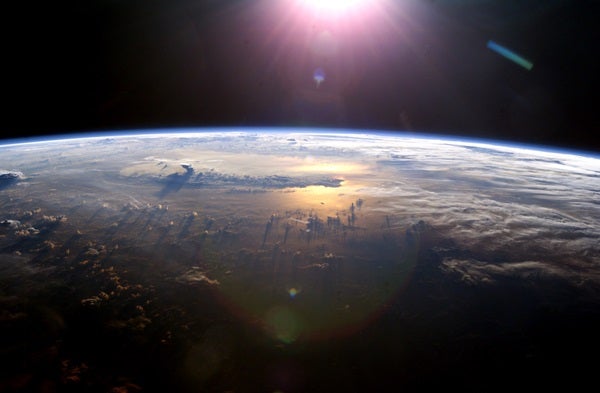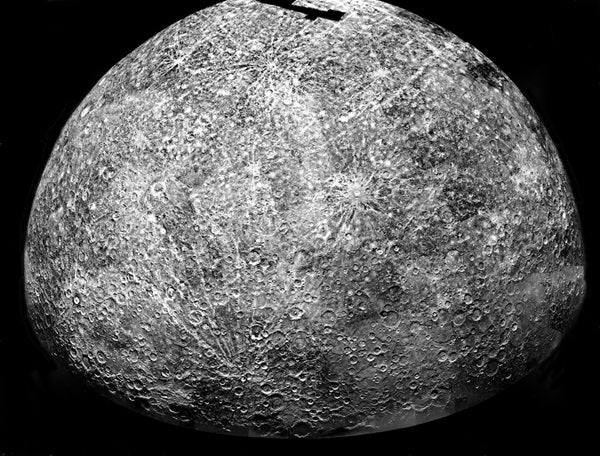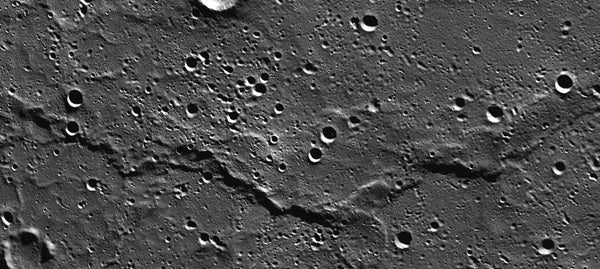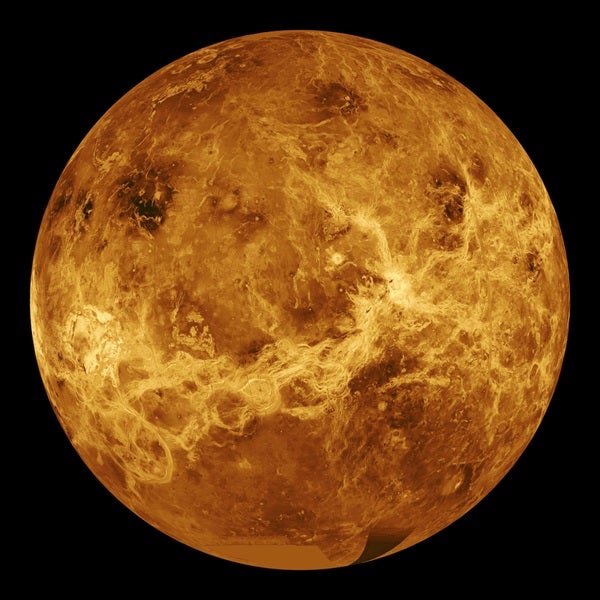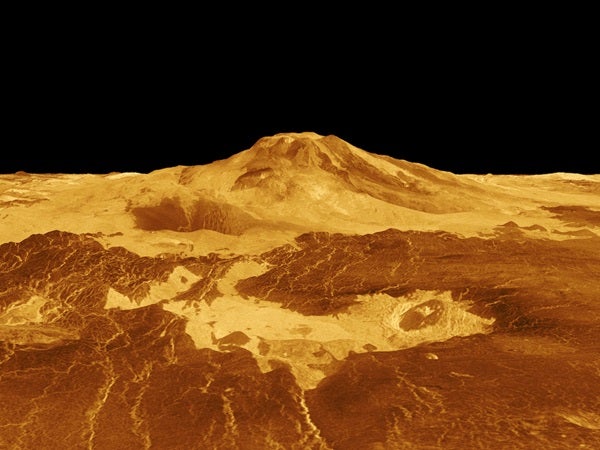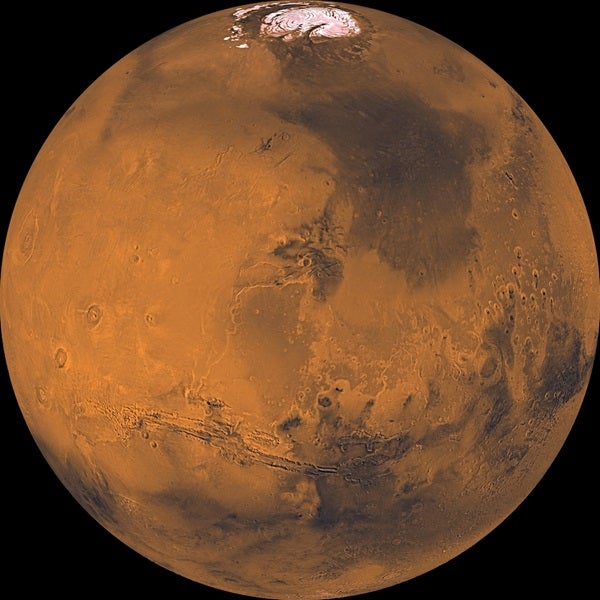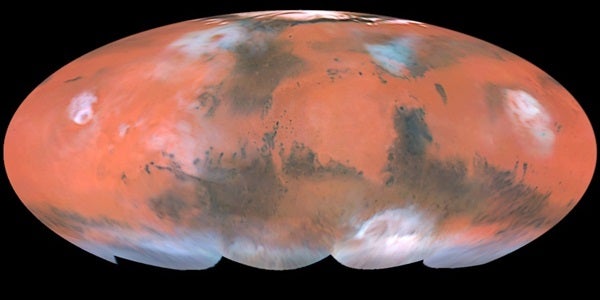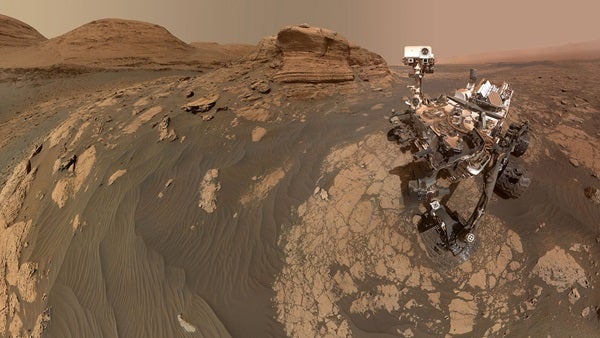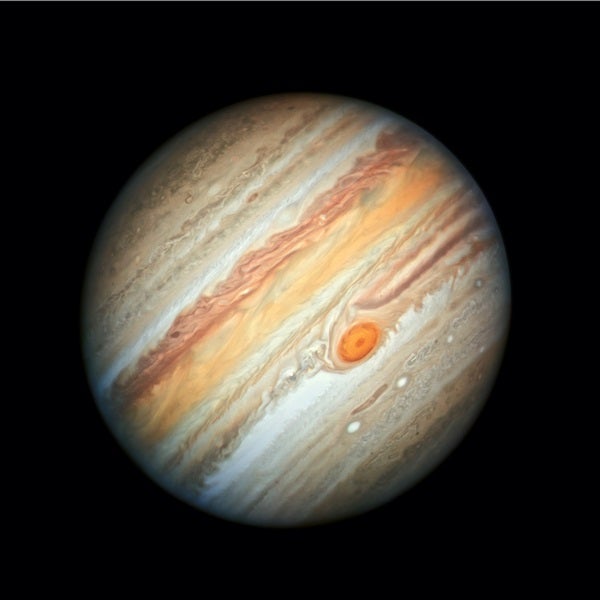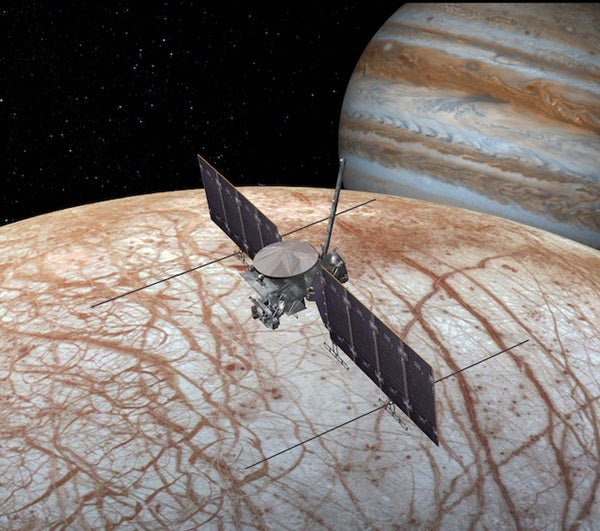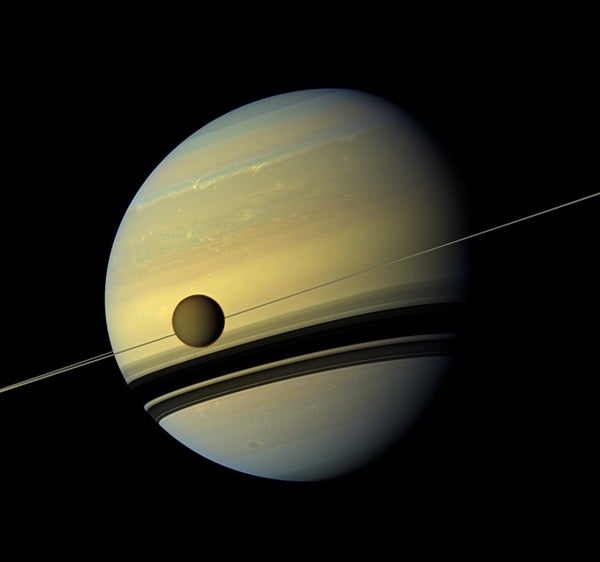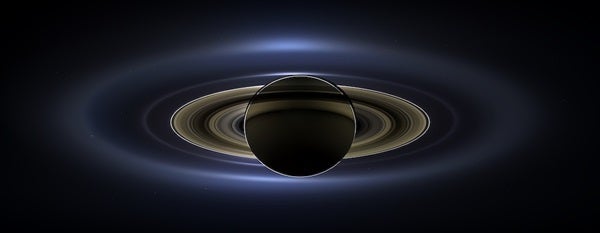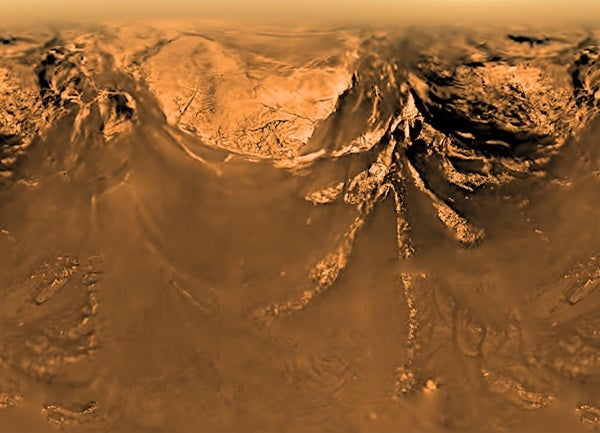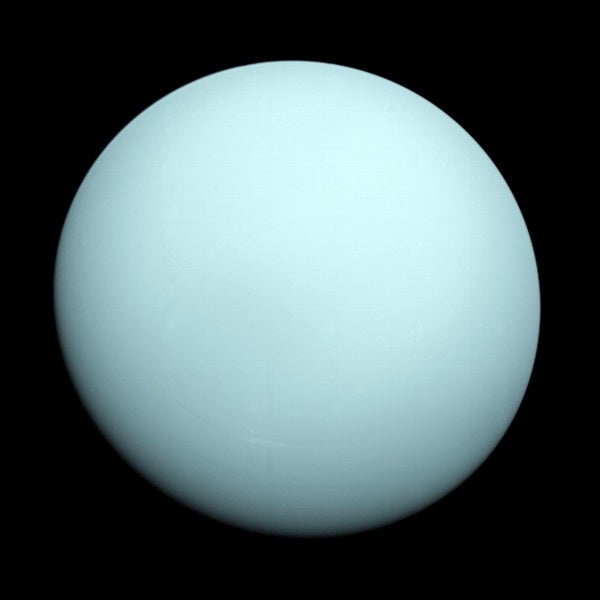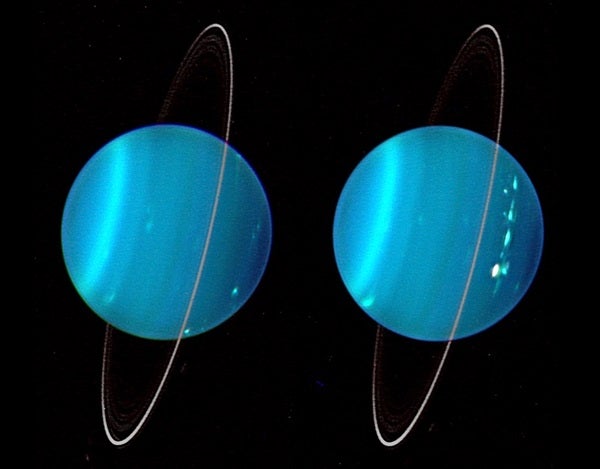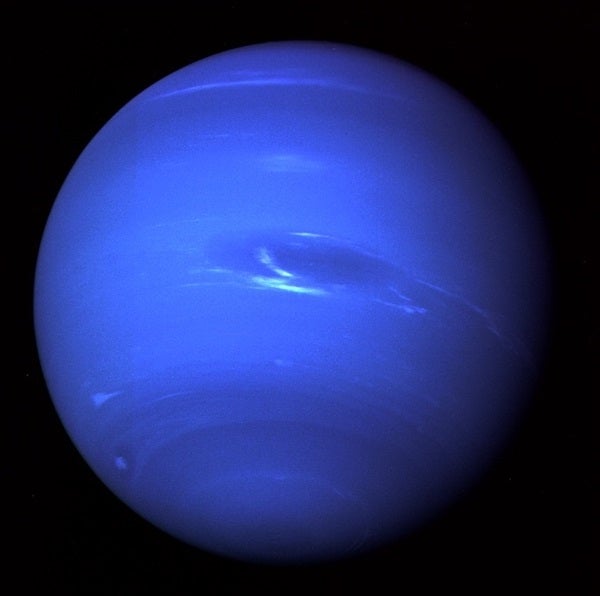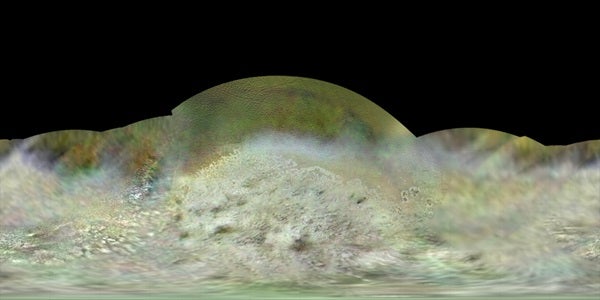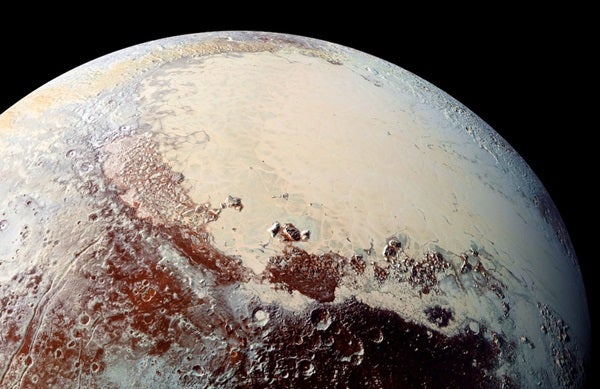Earth
Our planet, despite all the challenges we face living on it, is an unparalleled abode for life. Located in the Sun’s so-called Goldilocks zone, the energy we receive from our host star is just right. It keeps Earth warm enough that liquid water can happily exist on the surface, but it’s also weak enough that our oceans don’t boil away. Then there’s our atmosphere — what a blessing! This thick (but not oppressive) gaseous envelope not only provides us with the oxygen we need to breathe, but also protects us from all but the most formidable stray space rocks. And let’s not forget our planet’s magnetic field. Generated deep within Earth’s liquid outer core, which surrounds a solid inner core, this magnetic shield defends us from the constant onslaught of high-energy particles spewed out by the Sun as solar wind.
But impressive as Earth is, life has existed here for billions of years. And we already know quite a lot about our home world (even if there’s still plenty left to discover). So, instead of looking inward, let’s look out. Let’s take a quick tour of the other planets our solar system has to offer. Along the way, we’ll brush up on what we already know — as well as what we may soon find out.
STATS
Mass: 10.3 septillion pounds (5.97×1024 kilograms)
Diameter (equator): 7,930 miles (12,760 kilometers)
Average surface temperature: 59 degrees Fahrenheit (15 degrees Celsius)
Rotation period (day): 23 hours 56 minutes 4 seconds
Orbital period (year): 365.26 days
Moons: The Moon
Mercury
Mercury, which is the smallest and innermost planet, is constantly cooked by sunlight. Despite its proximity to our star, it’s not the hottest world in our solar system; still, Mercury experiences wild temperature swings unlike those found on any other planet. On the dayside, the Sun penetrates the planet’s thin, fleeting atmosphere and bakes the surface. But because there isn’t much air to distribute that heat, the temperature on the planet’s nightside plunges to hundreds of degrees below zero.
The Sun also helps give Mercury another peculiar trait: The world has a faint cometlike tail. Mercury’s feeble atmosphere contains sodium, which glows when excited by sunlight. Plus, the diminutive world doesn’t have much gravity — only about twice the gravity of the Moon. This means pressure from sunlight striking Mercury can liberate sodium molecules, forcing them “downwind” of the planet and creating a dimly glowing tail.
Thanks to its thin atmosphere, Mercury is also prone to impacts. This has left it with a rather pockmarked appearance. And to make matters worse, it’s wrinkled with age. The world has steep, clifflike north-south ridges that stretch all over its surface. Researchers think they might have formed as Mercury cooled after its birth, causing the planet to shrink and its crust to slightly crumple.
Mercury has so far been visited by only two spacecraft: Mariner 10 (launched in 1973) and MESSENGER (launched in 2004). The former was a flyby mission that only revealed a partial view of the tiny planet. However, the latter was an orbiter, which not only mapped the vast majority of Mercury’s surface, but also discovered that the planet’s permanently shadowed polar craters likely hold abundant water ice.
If you’d like to learn more about what Mercury has to offer, you need not wait long. The European and Japanese space agencies have teamed up and sent BepiColumbo to orbit Earth’s smallest sibling — and Bepi just made its first brief pass by the oft-forgotten planet this October. Stay tuned for more!
STATS
Mass: 0.055 Earth masses
Diameter: 3,030 miles (4,876 km)
Surface temperature: 805 F (430 C) during the day; –290 F (–180 C) at night
Rotation period (day): 58.8 Earth days
Orbital period (year): 88 Earth days
Moons: None
Venus
Despite being the most brilliant planet in our sky, Venus offers little visual oomph when observed from afar. (See “Unveiling Venus” on page 48.) That’s because its surface is shrouded by thick, omnipresent clouds. These poisonous puffs trap heat that would otherwise escape into space, making it the most sweltering planet in the solar system — hot enough to melt lead on its surface. But don’t worry about burning up: If you were to stand there, the atmosphere (made mostly of carbon dioxide laced with sulfuric acid) is so dense that the pressure would collapse your lungs and kill you instantly.
Despite its hellish environment, Venus holds many fascinating mysteries. For one, it’s strikingly similar to Earth in size and composition. And yet, the worlds have clearly led two very different lives, with Venus experiencing a runaway greenhouse effect in its past. Unlike Mercury, whose bulky iron core accounts for some 75 percent of the planet’s mass, the core of Venus is thought to be relatively earthlike: differentiated into a solid inner core and a molten outer core. However, Venus does not internally generate a discernible magnetic field like Earth does, which might be because it rotates (backward) so slowly that a venusian day is longer than a venusian year.
Steadily, though, Venus is revealing some of its secrets. The veil created by its clouds was finally lifted in 1994, when the Magellan spacecraft completed a five-year mission that, among other things, used cloud-penetrating radar to map some 98 percent of the world’s cloaked surface. As incredible as Magellan’s work was, however, a trio of new spacecraft recently selected to explore Venus in the next decade are sure to raise the bar even higher.
On June 2, NASA announced not one, but two complementary missions to Venus: DAVINCI (short for Deep Atmosphere Venus Investigation of Noble gases, Chemistry, and Imaging) and VERITAS (Venus Emissivity, Radio Science, InSAR, Topography & Spectroscopy). The former will dive through Venus’ atmosphere, snapping pics of the environment and sampling the world’s acidic clouds before slamming into its surface. That bold plan will allow scientists to stitch together a layer-by-layer profile of Venus’ atmosphere — and perhaps even confirm the floating phosphine detected there last year, which tantalized many because it is often produced by microbial life on Earth. Meanwhile, VERITAS will orbit Venus, using radar and imaging equipment to investigate whether the world is actively experiencing volcanic activity and, if so, learn what might be driving it.
And don’t forget EnVision, the European Space Agency’s contribution. This orbiting craft will use a sounder to study Venus’ underground layering, radar to map its surface, spectrometers to analyze trace atmospheric gases, and a radio experiment to probe the planet’s internal structure and gravitational field. With such an impressive trio preparing to venture to Venus, it’s safe to say we’ll unlock some surprising secrets about our sister world over the next decade or so.
STATS
Mass: 0.815 Earth masses
Diameter: 7,520 miles (12,100 km)
Surface temperature: 867 F (464 C)
Rotation period (day): 243 Earth days (retrograde)
Orbital period (year): 225 Earth days
Moons: None
Mars
As the most explored world in the solar system (save Earth), Mars has enjoyed the lion’s share of planetary research funding for several decades. We’ve come a long way since Italian astronomer Giovanni Schiaparelli first mapped his martian canali (“channels,” which was mistranslated to “canals”) in 1877. Nearly a century later, in 1965, NASA accomplished the first up-close and personal flyby of Mars with Mariner 4. In the decades since, dozens more spacecraft have incrementally advanced our understanding of the Red Planet.
Orbiters have thoroughly mapped Mars’ surface. Landers have probed the planet’s internal structure and monitored the local weather. Rovers have trundled across the desertscape to collect and analyze rock samples. And one small NASA helicopter named Ingenuity recently zipped through the martian atmosphere more than a dozen times — no small feat considering Mars’ air is just 1 percent as dense as Earth’s. This opens the door to future fleets of flying scouts that could explore broad swaths of the planet at an incredible pace.
Thanks to humanity’s legion of robotic martian surveyors, we now know the rusty world was not always as arid and inhospitable as it is today. Because Mars is covered in networks of valleys and deltas that once carried rivers and fed long-lost lakes, scientists are confident liquid water once flowed freely across its surface. Rock and soil samples plucked right off the ground and analyzed on the spot back up that history, as many could have only formed in the presence of copious liquid water.
Although rovers tend to get most of the credit, orbiters have contributed just as much to our understanding of Mars’ past. For instance, a 2018 study published in Geology based on high-resolution photos taken by NASA’s Mars Reconnaissance Orbiter analyzed dozens of martian outlet canyons carved out by flowing water that snaked from ancient lakes. The researchers found that the topography of the many outlet canyons matches what they’d expect if they had all rapidly formed during a massive and catastrophic flooding event some 3.5 billion years ago.
Such evidence for vast amounts of liquid water having once flowed on Mars is largely why NASA’s latest rover, Perseverance, is currently searching for signs of ancient martian life. But the possibility of past life isn’t the world’s only appeal. Compared to Mercury, Venus, and the giant planets, Mars could offer a somewhat suitable place for humanity to eventually set up shop — if, of course, we can harvest and make what we need there.
STATS
Mass: 0.11 Earth masses
Diameter: 4,220 miles (6,790 km)
Surface temperature: 68 F (20 C) to –243 F (–153 C)
Rotation period (day): 24 hours 37 minutes
Orbital period (year): 687 Earth days
Moons: Phobos and Deimos
Jupiter
Like Mars, Jupiter has received a lot of attention during the era of space exploration. That began with Pioneer 10, which flew by the gas giant in 1973. It was rapidly followed by Pioneer 11 (1974), Voyager 1 (1979), and Voyager 2 (1979). Each of these missions had their own scientific objectives, but collectively, they revealed a world of confounding complexity. The Pioneer probes took the first close-up shots of the behemoth’s storm-strewn atmosphere, as well as studied its super-charged radiation belts and powerful magnetic field (the strongest of any planet in our solar system). The Voyagers provided improved views of the king of planets, tracking Jupiter’s alternating bands of bright white zones and darker brown belts. This new perspective revealed strange atmospheric behavior that models did not predict, including eddies churning in the clouds and a pair of colliding oval storms that ejected streamers upon merging. Such unexpected sights left the imaging team “happily bewildered.”
In the decades since, NASA has continued slinging spacecraft at Jupiter. The Galileo mission included an orbiter and the first-ever probe to dive into the atmosphere of one of the outer planets. As the Galileo probe plunged into Jupiter’s swirling bands of multicolored clouds, it transmitted back data for nearly 58 minutes before finally succumbing to face-melting temperatures of almost 25,000 degrees Fahrenheit (14,000 degrees Celsius). Still, Jupiter’s beautifully chaotic atmosphere — including its famous Great Red Spot, a storm the size of Earth that’s been brewing for centuries — isn’t the only intriguing aspect of the jovian system.
Jove’s natural satellites total nearly four score and run the gamut in size, ranging from tens to thousands of miles wide. But of these moons, four truly stand above the rest. These are Jupiter’s Galilean moons: Io, Europa, Ganymede, and Callisto. The more we learn about these surprisingly complicated worlds, first recognized as moons by Galileo Galilei himself in March 1610, the more intriguing they get. Io is the most volcanically active world in the solar system, thanks to Jupiter’s immense gravity creating tides in Io’s solid surface that reach some 300 feet (100 m) tall. Europa’s surface, on the other hand, is mostly water ice and might even hide an underground global ocean of slushy water. Ganymede, which is wider than Mercury and the largest moon in the solar system, generates its own internal magnetic field. Callisto, meanwhile, shows little evidence of recent resurfacing, which means its heavily cratered face likely preserves a record of stray detritus streaming through the early solar system.
These intriguing features are just some of the reasons the European Space Agency (with NASA as a partner) plans to launch the JUICE (JUpiter ICy moons Explorer) mission in 2022, which will see an orbiter reach the jovian system in 2029. Once there, JUICE will spend several years closely scrutinizing Ganymede, Callisto, and Europa — while also evaluating the potential of these watery worlds to harbor life.
STATS
Mass: 318 Earth masses
Equatorial diameter: 88,850 miles (143,000 km)
Average temperature: –162 F (–108 C)
Rotation period (day): 9 hours 56 minutes
Orbital period (year): 11.9 Earth years
Moons: At least 79 moons
Saturn
The surreal je ne sais quoi of Saturn has captivated observers for centuries. That’s largely because the world’s stunning rings span some 170,000 miles (274,000 kilometers), or about 2.5 times the width of the planet itself. But get this: They might be as little as 30 feet (10 meters) thick in some places. So, when the planet is tilted just so to our line of sight, presenting its ring system side-on, those rings all but vanish from our view.
The world’s glimmering rings are made of countless pieces of dirty water ice that range in size from dust grains to mountains. Although it’s unclear exactly how or when the rings formed, Cassini data indicate they are the result of a moon (or moons) being torn asunder 10 million to 100 million years ago. Considering the planets are some 4.5 billion years old and scientists expect the rings to last just another couple of hundred million years, we’re quite fortunate to bear witness to this relatively brief celestial show.
Launched in 1997, the Cassini spacecraft spent some 13 years exploring all Saturn has to offer (despite mission planners initially banking on only four years of scientific study there). During that time, the craft returned thousands of awe-inspiring images, tracked Saturn’s seasonal changes, analyzed its icy rings, and studied its raging storms, including the massive hexagonal hurricane that churns around the world’s north pole. As part of Cassini’s Grand Finale in 2017, the spacecraft even skirted past the inner edge of Saturn’s rings before plunging into the gas giant’s multilayered, ammonia-laced clouds. During its final orbits, Cassini not only sampled ring particles that are magnetically drawn into Saturn’s atmosphere, but also created highly detailed maps of the world’s gravitational and magnetic fields.
While exploring the Saturn system, Cassini also dropped off an ESA-built lander named Huygens near the intriguing moon Titan. Despite all odds, the craft managed to survive its descent through the moon’s dense clouds, revealing one of the most surprisingly Earth-like worlds yet found in our solar system.
STATS
Mass: 95 Earth masses
Equatorial diameter: 74,900 miles (120,500 km)
Average temperature: –218 F (–139 C)
Rotation period (day):10 hours 39 minutes
Orbital period (year): 29.5 Earth years
Moons: At least 82 moons
Uranus
Unlike the gas giants Jupiter and Saturn, the solar system’s more distant ice giants have largely received the cold shoulder from robotic spacecraft. But thanks to a fortunate planetary alignment that occurs only once every 175 years, NASA’s ambitious Voyager 2 mission flew by the solar system’s seventh planet, Uranus, in 1986.
Like both its bloated inner siblings, Uranus hosts a ring system, though it is much fainter than that of Saturn. The rings around Uranus were initially discovered in 1977 by astronomers aboard the Kuiper Airborne Observatory, an airplane equipped with an infrared telescope. But Voyager 2 studied them in unprecedented detail. The mission also uncovered 10 new moons and clocked the planet’s atmosphere zipping around the world at speeds approaching 450 mph (725 km/h). Before continuing on to Neptune, Voyager 2 also captured informative images of some of the ice giant’s largest moons: Titania, Miranda, Umbriel, Oberon, and Ariel.
But no other craft has visited Uranus since. That’s disappointing, considering all the mysteries the planet still holds. Not least of which: Why is Uranus’ rotation axis tilted nearly 100° to the plane of the solar system, making it orbit the Sun not like a spinning top, but more like a rolling ball? No matter the cause (the leading theory is an ancient planetary collision), we do know that this unique orientation gives Uranus the most extreme seasons in the solar system. One pole is bathed in constant sunlight while the other is veiled in darkness for some 21 years at a time. Uranus’ magnetic field is also lopsided, tilted some 60° relative to its spin axis, so the planet’s rotation twists its magnetic field lines into a bizarre corkscrew shape.
Another unresolved mystery about Uranus is its structure. The blue-green hue of its swirling atmosphere (primarily made of hydrogen and helium) is the result of trace methane gas, which more readily absorbs red light. But as you venture deeper beneath the planet’s cloud tops, things get murkier. Scientists think that about 80 percent of the planet exists in the form of hot and dense mantle layers composed of super-pressurized water, ammonia, and methane fluids, which surround a small core of icy rock. The jury’s still out on that, however. Maybe another mission to Uranus is in order?
STATS
Mass: 14.5 Earth masses
Equatorial diameter: 31,760 miles (51,120 km)
Average temperature: –323 F (–197 C)
Rotation period (day):
17 hours 15 minutes (retrograde)
Orbital period (year): 84 Earth years
Moons: At least 27 moons
Neptune
You’d expect the solar system’s most distant planet, which is some 30 times farther from the Sun than Earth, to be pretty chill. But although aquamarine Neptune is absolutely cold, it’s definitely not calm.
Neptune sports the strongest winds in the solar system, which can whip across the gaseous planet at speeds up to 1,200 mph (2,000 km/h). That’s about 1.5 times the speed of sound! Plus, about half the time, the world hosts at least one giant anticyclonic storm called a great dark spot, which are thought to take on a shadowy appearance because their strong winds tear a hole in Neptune’s methane-laced cloud deck. However, unlike Jupiter’s seemingly immortal Great Red Spot, Neptune’s fierce storms usually pop up and disappear within just a few years.
Let’s not forget Triton, Neptune’s largest satellite, either. It’s the only large moon in the solar system that orbits in the opposite direction of its host planet’s spin. Scientists think Triton might have this so-called retrograde orbit because it was captured from the Kuiper Belt, a vast disk of icy remnants from the early solar system, orbiting beyond Neptune. But no matter its origin, Triton is a surprisingly active world. Thanks to Voyager 2, we know this frosty wonderland is home to a variety of intriguing features: Its frozen nitrogen crust is adorned with rounded mounds created by icy lava flows, as well as vast, smooth volcanic plains. It’s also speckled by fewer craters than expected for an object its age, suggesting its surface is being rejuvenated. Voyager even found that Triton hosts active ice volcanoes that spew frozen nitrogen as high as 5 miles (8 km) above the moon’s south pole.
I’ll leave you with one final thought: In the decades since Voyager 2 carried out the only mission to the ice giants, scientists have uncovered thousands of exoplanets outside our solar system. And despite planetary formation models suggesting ice giants should be relatively rare, exoplanetary evidence suggests they are surprisingly common. So, although our ice giants may seem too alien to matter, exploring them might help us better understand what it took to set the stage for life here on Earth — or even beyond.
STATS
Mass: 17.15 Earth masses
Equatorial diameter: 30,800 miles (49,500 km)
Average temperature: –330 F (–201 C)
Rotation period (day): 16 hours 7 minutes
Orbital period (year): 165 Earth years
Moons: At least 14 moons
Honorable mention:
Pluto
Pluto, despite what the International Astronomical Union says, is still a planet in the minds of many. And whether it’s a planet or dwarf planet, nearly all agree Pluto is a fascinating world. Covered in plains of nitrogen ice and textured with mountain ranges of frozen water, this demoted world was closely studied less than seven years ago by NASA’s New Horizon spacecraft.
STATS
Mass: 0.002 Earth masses
Diameter: 1,480 miles (2,380 km)
Surface temperature: –387 F (–233 C)
Rotation period (day): About 6.4 Earth days (retrograde)
Orbital period (year): 248 Earth years
Moons: Charon, Hydra, Styx, Kerberos, Nix


